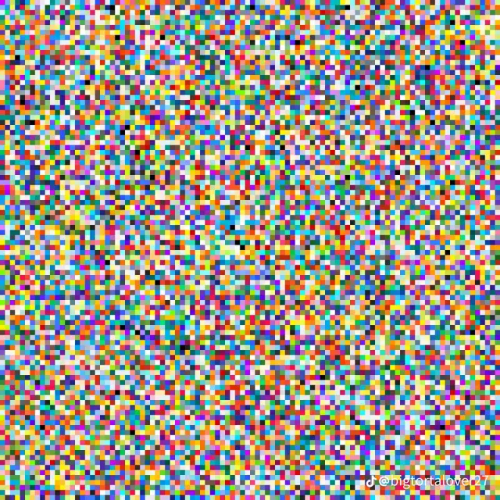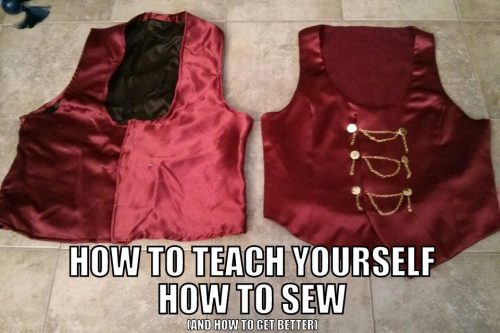This Is For The Ao3 Users Who Enjoy Color Or Prefer Non-white Backgrounds
This is for the ao3 users who enjoy color or prefer non-white backgrounds
There is a TikTok user who made a tutorial of how to make your ao3 colorful, I’ll link her profile down below cuz she has MANY diff skin tutorials








Here is her tutorial, here is her link to her page.
These are two that caught my attention, but that’s cuz I need darker colors, she has a lot of pretty and colorful themes for y’all to check out!


Enjoy!
And thank you @cloudysao3 (her TikTok and Instagram handle)
More Posts from Madadreferencearchive and Others
>100,000 notes - mass market slop
10,000 notes - well executed crowd pleaser
1,000 notes - cult classic
100 notes - uncompromising avant-garde art for those of discerning taste
10 notes - misunderstood genius that the culture is not yet ready for
1 note - direct admission of suicidal ideation
wake up babe, new reason to ditch FANDOM/Wikia just dropped
![Zelda Wiki twitter:
Fandom refused to take this wiki down after we returned to independence and now it looks like they are using generative A.I. for "quick answers" which are spreading misinformation.
Please stop using Fandom. We do not approve of our past work being used like this.
[Screenshot of FANDOM Zelda Wiki with Quick Answers feature]](https://64.media.tumblr.com/55df791ecf5b885002a8ef164826ff07/cca355bad3b8715c-54/s500x750/5d7627c400c21ccfd92e36a8de7737d0b96b702a.jpg)
![Zelda Wiki twitter:
IN one case, it provides "answers" for a completely unrelated franchise.
[Screenshot of FANDOM Zelda Wiki with Quick Answers feature]](https://64.media.tumblr.com/dba0adad0a30f2d590ae05c4f7c0a839/cca355bad3b8715c-7d/s500x750/53137cab0b665a2309be4c05cefe2186b22d7186.jpg)
Previosuly
corporate monster infested with ads which devoured Gamepedia and other companies (feat me on their shit policies, SEO and migration process)
turning entire articles into ads if paid enough
limited functionality preventing admins to even fight vandalism
merging and removing of LGBT+ wikis (and forced domain change for educational [think serious] wikis to "fandom")
official wiki status has no meaning in controlling shit
very much censorship (same good ol' allergy to adult stuff)
gets paid by US Navy to advertise their events (one, two)
Alternative free wiki hostings (aka wiki farms)
Miraheze - started in 2015, non-commercial - no ads and runs on donations, wide array of MediaWiki features, wide array of allowed types of wikis and content, much autonomy for projects, custom domain and private wiki options
wiki.gg - started in 2022 by former Gamepedia staff, limited to video games, accent on involvement of game devs and thus hosting official wikis, has ads for anons (but only of games having wikis here)
Telepedia - started in 2022, limited to entertainment (although might allow other themes upon review), has ads for anons, replicates Miraheze structure
WikiTide - started in 2023, no ads and runs on donations (but also tied w/ premium version called WikiForge), largely replicates Miraheze but has stricter content policies, custom domain option
Other free options I'm aware of are either too limited in allowed content or are very outdated/unstable in technical department to recommend here (or in case of Neoseeker - I'm completely unfamiliar with it, and can't say anything about it), but you still can check them out, alongside paid hostings, on this MediaWiki page.
If you (or your community) are brave and dedicated enough you can go with self-hosted MediaWiki instance (aka independent hosting), like JoJo Wiki (who started on Wikia and succeed at overtaking the SEO) or NIWA wikis. This option, of course, requires funding and technical knowledge, but it's still very much possible.
How to find existing alternative/independent wikis
try to use "-fandom" filter for search query in Google, or use other search engines like Bing or DuckDuckGo
Indie Wiki Buddy browser extension - it modifies search engine results and performs redirects based on its centralized list of independent wikis; a new indie wiki has to be requested/submitted to get added [ Firefox / Chrome ]
Redirect to wiki.gg browser extension - same as IWB but for wikis moved to wiki.gg (as I understand, works automatically without dedicated listing) [ Firefox / Chrome ]
(simple) Redirector browser extension - in case the wiki is neither on IWB or wiki.gg, and it doesn't filter out search results - only performs redirect on whatever you get; a redirect has to be set manually - see this tutorial [ Firefox / Chrome ]
Fuck FANDOM, support real people, support indie wikis
Summer Horror
I recently hosted a TTRPG game jam with the premise of summer horror.
The games that came out of it were fantastic, and can be found by going to the submissions tab on the jam page.
A couple spotlights, though!
Ritual is a Wicker Man / Midsommar style cult horror game that doesn't use a GM. Instead, players who aren't in a scene switch to playing cultists, and as the PCs get killed off more and more cultists can concentrate on the remaining players.
Letters Home is a game about being at summer camp and gradually realizing something is Terribly Wrong with the place. It's two player, and involves actually exchanging letters, and is a great little device for co-writing a horror story.
Sleepless Seas is a solo fishing game that mirrors stuff like Dredge. The tone is gloomy and liminal, and there's the lingering implication that you might be stuck in some sort of piscine purgatory.
Ash Trapped In Cracked Lips is difficult to describe, but the phrase I would use is "Cormac McCarthy's Dark Souls." It's also big, the biggest game submitted to the jam, and features adventurers wandering through a burned out afterlife where there's little movement beyond the circling of vultures.
Haunt is built on the same engine as Ritual, but focuses instead on Hill House style hauntings. Like Ritual, it's a focused, scary experience where the ghosts multiply as the living players dwindle, and it packs a stellar sense of atmosphere.
There are also several more games in the jam, including some of my own, and again they can all be accessed via the jam page.
Summer is ending, but if you want to get in one last good scare (or prepare for autumn), check some of these out!

AI disturbance overlays for those who don't have Ibis paint premium. found them on tiktok







Apartment hacks masterpost
Kitchen
How to clean up kitchen (particularly the sink, burnt pots and small aplliances)
How to take care of kitchen stuff so that it lives longer
10 commandments of a clutter-free kitchen
Organizing kitchen mini masterpost
5 things to do in the kitchen before you go to bed
What is soapy bowl and why it’s awesome
How to organize your fridge (also here, here and here)
Thins you should know about your fridge
Adding more storage space in a tiny kitchen
Cleaning
Lots of cleaning tutorials and tips. And some more
How to clean up pantry
How to make your house look cleaner than it really is
How to wash pillows
Cleaning the bathroom
How to clean the nastiest places (and get rid of bad smells, etc.)
Floor-to-celling guide to spring cleaning
Recaulking your bathtub
Cleaning grout
How to dispose of toxic waste
Cleaning the medicine cabinet
How to make chores more fun
You mustn’t skip these chores, but you can delay these if you’re busy
Easily forgotten things that you should clean/replace
Why you need a catch-up day
Small cleaning tasks to do in under 15 minutes (also here)
Looking for a flat/moving
First apartment checklist
Where too look during an apartment hunt (and some more tips)
Negotiate these things with your landlord
What to do first in a new place
What do clean before moving out
How not to get crazy during moving flats
How to downgrade to a smaller place
Organisation, storage
10 habits for better home organisation
How to store off-season items
10 storage ideas for small spaces (more here)
Storage secret weapons
How to organise your closet
Things to do before twice-yearly closet switchout
How to store and maintain your sweaters
Decluttering
Why it feels great
How to get rid of clutter
How to declutter (not only a flat)
What needs to be thrown away from your flat
How to let go of the things you no longer need
Things you own too many of; you can throw away these too
Decuttering the bathroom
Decluterring masterpost
Decorating
Projects for every room in your home/flat
Add style to your home
DIY decorating ideas
How to use negative space
4 common decorating mistakes and how to avoid them
Questions to ask yourself before buying something new
How to choose furniture that’ll be easier to clean
Season-specific tips
Things to do before the cold season
Household hacks for winter
Preparing for Christmas
Green thumb 101
How to take care of succulents
Never kill a plant again
Living alone / Sharing a flat
How not to be lonely when living alone
12 things you can only do when home alone
What you learn by living alone
Things you learn while sharing a flat
What to pack when leaving for a dorm
How to seamlessly share a kitchen (or a flat in general)
Safety issues to discuss with flatmates
Benefits of living with strangers
And also how to turn a house into a home
Some people have asked me if I can publish my mapmaking tools. So I developed a software. 🙂
Here is the result:


A lot of people don’t believe me when I say that I’ve only been sewing for a little over 3 years. Previous to that I had only really ever sewn plushies, pajama pants or pillows during Guide Guide workshops aka I could put fabric through a machine and sew in (sort of) straight lines but not much else. I had never used a clothing pattern before, I had never used anything other than a basic straight stitch, and I had never bought fabric. October 2012 was the first time I ever sewed any garments completely from scratch and those were my Fushimi from [K] vest and coat and now this October (2015) I will be competing at the Master’s level for cosplay craftsmanship. So I figured I’d give a short rundown of how I taught myself how to sew and how I improved.
1) I watched a lot of Project Runway (the earlier seasons… Annnndreeee, where is Annnndreee?). While this didn’t help much in actual sewing, it got me familiar with a whole lot of terminology and types of fabric and outfits. Plus it also showed me where people tended to take shortcuts and when those shortcuts tended to fail.
2) I got a very basic sewing machine and I READ THE ENTIRE USER MANUAL. I started off on a Singer Simple which was a gift from my parents (who actually bought it 2 years earlier but never gave it to me thinking I’d never use it… HA!) and I went through every single English page of that user manual. I became familiar with all the parts of my machine, how to thread it, how to change bobbins, how to clean it, how to fix jams, all the different stitch types, and I practiced sewing a bunch of random stitches on scrap pieces of fabric just to see what they looked like and how they changed when I changed different tension settings.
3) I got a basic sewing book (from like 1965… it’d probably better to get an updated/current book) that acted as a glossary of sewing terms. I had no idea what 50% of the stitches I needed to use were called so this became very useful later when I bought my first pattern.
4) I bought my first patterns and chose something fairly simple to start off with which was a lined vest (followed by an immensely more difficult jacket). I went with Simiplicity patterns after doing a lot of googling for the most new-user-friendly patterns.
5) Then I FOLLOWED THE PATTERN INSTRUCTIONS. It seems like an obvious step but even now I sometimes skip a step and then later regret it. Everything the pattern said I needed, I bought. I bought the specific types of fabric, interfacing, thread, buttons, I did not deviate from their suggestions for the first trial run. Then I read through the pattern instructions, cut out all the corresponding pieces for my size and got to work. The key was to work slowly and re-read things as I went. I also used my sewing book and google to help better explain some of the instructions that were not 100% clear to me just starting out. I also looked up youtube video tutorials on how to iron seams, sew darts, properly clip curved edges, sew button holes, and finish inside seams. Research, research, research!
6) To re-iterate: TAKE YOUR TIME. Slow and steady wins the race. It took me probably a solid 4 days to sew a very simple vest that would probably take me maybe a couple hours now but damn it was one of the cleanest looking vests I had ever sewn. I made sure not to rush anything and gave myself lots of time.
7) I kept practicing. The more I sewed, the more familiar I became with how garments were put together and where I could change things to better fit my size or how to alter things to better fit the garment I was trying to create. I experimented whenever I could on scrap fabric to see what would and would not work for stitching and ironing.
3 years later and I can now draft my own patterns and sew dozens of different types of garments with dozens of fabric types. I would attribute 90% of my learning experience to taking it slow at first and researching as I went. I didn’t allow any guesswork on the first couple of projects I worked on because how would I ever learn if I didn’t look into how something was properly done? Google, youtube, tutorial blogs (wink wink), reference books, and pattern instructions are you friends, do not take them for granted.
Pictured at the top on the left is the first Kirishiki vest I (rush) sewed in July 2012 without following instructions and trying to do it myself. The vest on the right is from December 2012 after I decided to take my time and follow instructions and actually learn while I was sewing. You can improve 100% just by taking your time, doing some research and following the instructions.
Bonus: What I bought for my sewing starter kit
A green rotary/cutting mat. They can be really expensive but I have been using my large mat for 3 years straight and it works wonders at not only protecting the surface you are working on, but giving you a nice sturdy pinning and cutting surface that is self-healing and doesn’t get destroyed by pins and exacto knives.
1 large and 1 small pair of orange handled sewing scissors.
A 6" x 24" clear sewing ruler.
A pack of white/blue fabric pencils.
A box of standard pins, plus a pin cushion.
A pack of extra bobbins.
A pack of standard sewing needles for hand-sewing.
A pack of standard sewing needles for my machine.
An iron and mini ironing board.
Happy sewing!
-Heather
Executive Dysfunction Study Tips
(compiled by us, for us; not a comprehensive list by any means, just the ones that work well of our brain specifically)
dress in a Nice Outfit for the Aesthetic. Studying in slacks and a button-down or knit sweater or similar with a mug of tea has completely different vibes (and much more productive ones) than studying in pajamas, even if the clothes aren’t as comfortable. Besides, the faster we get work done, the faster we can change into Comfy Clothes and relax.
in a similar vein, Beverage + Studying Music. Our go-to is corn tea and the LoZ ocarina of time soundtrack. lyrical music is fine for doing calculations, but for essays its instrumental only since the lyrics can fuck with the writing process.
make that grid of everything you need to do from this post, with Check Boxes next to each thing for Checking Things Off (or you can cross them out if that’s more satisfying). Also gives an order and instruction for Starting The Thing which is usually the hardest part.
Imitate School Environment with “periods”, AKA studying for 40 minutes with a 5-10 minute “passing period” in-between, in which getting up and walking around is required. do not do “fun stuff” (reading/YouTube/etc) during passing period, or getting brain back on task will be Hell. our brain works best with a clear structure. Also, Set Alarms.
SNACKS!! snacks that are crumb free and don’t disturb the working process are best. I like pumpkin seeds, smoked salmon, apple/pear/peach/etc slices, cheese, and similar. washed bowls of fruit (grapes, cherries, strawberries, etc) make my fingers wet every time I eat them which is inconvenient, and I can’t eat most junk foods for allergy/health reasons (+ grease, cheese dust, etc are similarly impractical)
from this post, “make timelapses on your phone of u doing your work” providing the exact amount of Nervous Energy from being “watched” to be productive, without the anxiety of being criticized from having someone actually watch you. For an extra kick, actually post them to YT.
have Separate Windows open for studying vs for fun stuff. I usually have three windows open on my laptop at all times – one for YT/reading (relaxing stuff), one for studying, and one for writing.
set a Consistent Time To Work and Time To Stop Working, because brain stop working late at night when get tired, but brain also no work as soon as we get home from class, because we’re exhausted and need to take a break + eat first.
in a similar vein, have a Work Time Ritual to get brain in the mood. Do the same thing every time its time to work so that you can pavlov yourself. For example, having a glass of water and and doing five jumping jacks, taking a shower, or getting changed into Studying Clothes. ADHD brain hates Transition Between Activities and also Starting Task so make it fun or relaxing.
finally and most important!!!! sleep well, eat well, and when its time to stop working (NOT when work is done, but when its Time To Stop), take a break and do something relaxing. Work on hobby or lie in bed and read fanfiction. We don’t work past 10:00PM and we aren’t out of bed past 11:00PM. aint nothing going to get done if your body isn’t in a shape to get it done. As a system, sometimes we can see the body as a tool/instrument/machine separate from the mind/identity/personality, and you gotta keep that shit well-maintained or its gonna break down on you and you’ll have to take it to the repair shop.
I Crocheted Neil Banging Out The Tunes

rat pattern from ComplicatedKnots
piano freehanded
-
 sugasugarsuga liked this · 5 days ago
sugasugarsuga liked this · 5 days ago -
 accio-fanon liked this · 5 days ago
accio-fanon liked this · 5 days ago -
 calciummarks liked this · 5 days ago
calciummarks liked this · 5 days ago -
 abiamantha reblogged this · 6 days ago
abiamantha reblogged this · 6 days ago -
 abiamantha liked this · 6 days ago
abiamantha liked this · 6 days ago -
 mari--lace reblogged this · 6 days ago
mari--lace reblogged this · 6 days ago -
 gloryraiin liked this · 6 days ago
gloryraiin liked this · 6 days ago -
 cypherptae reblogged this · 6 days ago
cypherptae reblogged this · 6 days ago -
 cypherptae liked this · 6 days ago
cypherptae liked this · 6 days ago -
 jello-octops liked this · 6 days ago
jello-octops liked this · 6 days ago -
 ishould-sleep liked this · 1 week ago
ishould-sleep liked this · 1 week ago -
 xicana-llorona reblogged this · 1 week ago
xicana-llorona reblogged this · 1 week ago -
 xicana-llorona liked this · 1 week ago
xicana-llorona liked this · 1 week ago -
 kaztheghost reblogged this · 1 week ago
kaztheghost reblogged this · 1 week ago -
 kaztheghost reblogged this · 1 week ago
kaztheghost reblogged this · 1 week ago -
 kaztheghost liked this · 1 week ago
kaztheghost liked this · 1 week ago -
 fiowerbed liked this · 1 week ago
fiowerbed liked this · 1 week ago -
 starstruckk08 liked this · 1 week ago
starstruckk08 liked this · 1 week ago -
 magical-mousy liked this · 1 week ago
magical-mousy liked this · 1 week ago -
 toallina liked this · 1 week ago
toallina liked this · 1 week ago -
 mom0cat reblogged this · 1 week ago
mom0cat reblogged this · 1 week ago -
 mom0cat liked this · 1 week ago
mom0cat liked this · 1 week ago -
 firefly464 reblogged this · 1 week ago
firefly464 reblogged this · 1 week ago -
 cvpidzlxve liked this · 1 week ago
cvpidzlxve liked this · 1 week ago -
 yonashiras reblogged this · 1 week ago
yonashiras reblogged this · 1 week ago -
 heavensske liked this · 1 week ago
heavensske liked this · 1 week ago -
 gothgleek liked this · 1 week ago
gothgleek liked this · 1 week ago -
 ndjjddsworld liked this · 1 week ago
ndjjddsworld liked this · 1 week ago -
 iamthunderhearmehowl reblogged this · 1 week ago
iamthunderhearmehowl reblogged this · 1 week ago -
 chalamazed4life liked this · 1 week ago
chalamazed4life liked this · 1 week ago -
 pacska liked this · 1 week ago
pacska liked this · 1 week ago -
 technicallysublimeenemy liked this · 1 week ago
technicallysublimeenemy liked this · 1 week ago -
 pluralplush liked this · 1 week ago
pluralplush liked this · 1 week ago -
 bluelivingdragon liked this · 1 week ago
bluelivingdragon liked this · 1 week ago -
 mufferoni26 liked this · 1 week ago
mufferoni26 liked this · 1 week ago -
 aconitumvxen liked this · 1 week ago
aconitumvxen liked this · 1 week ago -
 pleasepleasepleaseme reblogged this · 1 week ago
pleasepleasepleaseme reblogged this · 1 week ago -
 decaypup liked this · 1 week ago
decaypup liked this · 1 week ago -
 sinlilith liked this · 1 week ago
sinlilith liked this · 1 week ago -
 fastfoodlauver liked this · 1 week ago
fastfoodlauver liked this · 1 week ago -
 perechimaera liked this · 1 week ago
perechimaera liked this · 1 week ago -
 caylariley liked this · 2 weeks ago
caylariley liked this · 2 weeks ago -
 kthftbbh liked this · 2 weeks ago
kthftbbh liked this · 2 weeks ago -
 scareqrow412 liked this · 2 weeks ago
scareqrow412 liked this · 2 weeks ago -
 thesinnnx liked this · 2 weeks ago
thesinnnx liked this · 2 weeks ago -
 tantlemimes reblogged this · 2 weeks ago
tantlemimes reblogged this · 2 weeks ago

Hey my main is mad-ad I use this side blog to keep posts I want to save handy and my drafts clear
76 posts